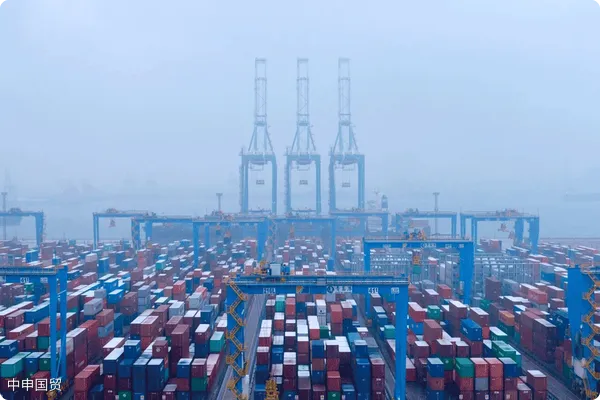- Shanghai Zhongshen International Trade Co., Ltd. - Two decades of trade agency expertise.
- Service Hotline: 139 1787 2118

Customs clearance reflections triggered by an inductor
In February 2023, when the last batch of Korean-made inductors passed Huanggang Port customs inspection smoothly, my customs declaration team finally breathed a sigh of relief. This seemingly ordinary electromechanical product import business actually condensed the most typical customs challenges in international trade:3Ccertification, declaration element organization, port selection, and timeline control. As aforeign tradeveteran with 15 years of experience, I want to use this case to show you theImport Customs Declarationthe tricks of the trade.
Why choose Huanggang Port?
During the project initiation phase, the client questioned why other Shenzhen ports werent chosen. Our data analysis showed: Huanggang Port handles an average of 2,000 customs declarations for electromechanical products daily, with dedicated inspection channels for electronic components, averaging 3 working days faster than Shekou Port. More importantly, its advance declaration model allows customs declaration and transportation to proceed simultaneously.
In actual operations, we adopted a two-step strategy:
1. Initiate pre-declaration when goods are loaded at Incheon Port, Korea
2. Complete full documentation submission 48 hours before vessel berthing
This time difference secured us a valuable 0.5 working day buffer.
The Passcode for CCC Certification
As a mandatory certification product for inductors, the CCC certificate is the lifeline for customs clearance. We started preparations two months in advance:
- Verifying correspondence between Korean factorys KC certification and domestic 3C certification
- Preparing electromagnetic compatibility test report (EN55032 standard)
- Pre-recording product model and certificate number correspondence table
Special reminder: Since 2022, customs has implemented the Certification and Accreditation Business System, reducing certificate verification time from 3 days to 2 hours, but requiring certificate attachments to include bilingual (Chinese-English) specification parameter pages.
The devil in declaration details
Inductor declaration elements appear simple but contain hidden complexities:
| Element name | Common errors | Correct example |
|---|---|---|
| Material | Only write metal | Ferrite core + copper wire (must specify insulation paint model) |
| Working principle | Blank or incorrect description | Utilizing electromagnetic induction principle, impedance value xxΩ@1MHz |
We specially created an Essential Self-Check List, requiring clients to provide original product specification documents to avoid parameter distortion caused by secondary translation.
Breakthrough solutions for inspection efficiency
This inspection took 15 days, within the normal range for electromechanical products. But through the following measures, we were 3 days faster than average:
- Preparing inspection explanation documents in advance (including product internal structure cross-sectional views)
- Arranging Korean engineers for 24/7 standby to respond to customs inquiries
- Use the customs Inspection Appointment System to secure the earliest inspection slot
Key tip: Huanggang Port implements non-intrusive inspection for 70% of electronic components. By pre-submitting X-ray scan images, we successfully avoided physical container inspections.
Three dimensions of cost control
In this case, we saved the client 12% in comprehensive costs:
- Time Cost: Shorten port detention through pre-declaration + guarantee release
- Cost of funds: Utilizing tariff guarantee financing to delay tax payment
- Hidden costs: Avoiding subsequent audit risks caused by declaration errors
Notably, after the 2023 implementation of the new Electromechanical Product Import Management Measures, inductors provisional tariff rate dropped from 8% to 5%, and we promptly assisted the client with tariff difference refunds.
New customs thinking amid industry changes
With deeper application of RCEP rules of origin, we recommend clients:
- Establish a factory in South KoreaIt is recommended to verify through the following methods:Digitize document archives
- Declare inductors combined with other electronic components to enjoy cumulative rule benefits
- Preemptively establish Vietnam and other ASEAN countries as secondary supply sources to mitigate supply chain risks
In the recent Smart Review pilot program launched by the General Administration of Customs, standardized products like inductors may achieve second-level release in the future. We are helping clients prepare for AEO certification in anticipation of the next round of trade facilitation reforms.
Three pieces of advice for importers
Through this case, I want to particularly emphasize:
- Document management should be front-loaded: The ideal scenario is to initiate customs clearance document preparation at contract signing
- Port selection should be scientific: Recommend establishing a Customs Clearance KPI Database for each port
- Compliance investment should be sustained: One of our clients invests 200,000 annually in pre-classification, but avoids over 2 million in compliance losses
International trade operates like a precision timepiece where every gear must mesh perfectly. When importing inductors next time, ask your agent: Can you dissect each customs clearance link with surgical precision? This may make the difference between 15 and 25 days.
Related Recommendations
? 2025. All Rights Reserved. Shanghai ICP No. 2023007705-2  PSB Record: Shanghai No.31011502009912
PSB Record: Shanghai No.31011502009912










